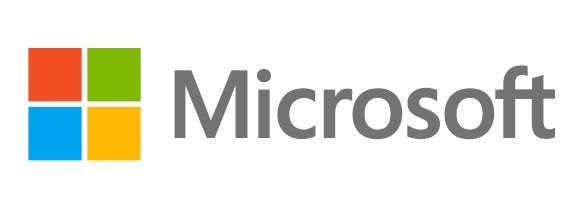In today’s fast-paced digital world, organisations are continually seeking innovative solutions to support their hybrid cloud needs. Embracing cloud technology has become critical as it offers unmatched scalability, flexibility, and cost-effectiveness.
Hybrid is mainstream motion and organisations are looking for a solution that meets their needs to modernise and secure their on premise infrastructure and at the same time get the benefits of cloud, achieving operational efficiency by leveraging cloud control planes, refactoring their environment to drive new business and affordably run intelligent edge and remote branch solutions. They desire a solution that strikes the balance between cloud-native resources and on-premises infrastructure.
In 2023, Statista reported that approximately 72% of all global enterprises have adopted some kind of hybrid structure.
In this blog, let’s explore the dynamic world of hybrid cloud and the remarkable capabilities of Azure Stack HCI, now known as Azure Local. Whether you’re new to the hybrid cloud or looking to enhance existing cloud strategy, explore the hybrid cloud, its benefits, and how Azure Local, with Exigo Tech’s expertise, can elevate your organisation.
Understanding Hybrid Cloud Environment
Hybrid Cloud, a strategic approach and a compelling solution, combines the strengths of private and public cloud models. With this innovative solution, organisations can optimise IT resources, maintain data control, and leverage the scalability of the cloud. With a hybrid cloud environment, organisations can host critical applications that require high availability and sensitive data on a private cloud with public cloud being utilised for scalable and cost-effective workloads. This approach ensures optimal performance, data accessibility, and security, regardless of the organisation’s size or industry.
Hybrid cloud solutions connect public and private clouds, enabling organisations to handle increasing demand and reallocate resources as needed. Implementing a hybrid cloud strategy with Azure Arc and Azure Local facilitates seamless workload and resource expansion between private and public clouds. There are many methods to build a hybrid cloud like combining public cloud, private cloud, on-premises infrastructure, and third-party services. However, merging on-premises infrastructure and public clouds is one of the most common choices.
Benefits of Implementing a Hybrid Cloud Strategy
By strategically combining the strengths of private and public clouds, organisations can achieve an agile, cost-effective, and secure IT infrastructure. Some of the major benefits of a hybrid cloud include:
1. Flexibility and Scalability
Gain unparalleled flexibility in managing workloads and scale resources on-demand between public and private cloud environments.
2. Cost Optimisation
Control IT spending by utilising public cloud resources for non-sensitive workloads, reducing the need for extensive on-premises infrastructure.
3. Enhanced Data Security
Keep control of sensitive data and applications by keeping them within your secure on-premises infrastructure.
4. Workload Optimisation
Customise infrastructure to meet each workload’s specific needs by leveraging the strengths of public and private clouds to maximise efficiency.
5. Business Continuity and Disaster Recovery
Ensure seamless business continuity with advanced disaster recovery capabilities between hybrid cloud environments.
What Is Azure Local?
Microsoft’s Azure Stack HCI (now known as Azure Local) is a hyperconverged infrastructure (HCI) host platform which is offered as an Azure service. It delivers advanced security, performance, and feature updates. Azure Local, a cutting-edge hybrid cloud solution, bridges the gap between on-premises data centres and the Azure cloud platform. With Azure Local for a hybrid cloud environment, organisations can simplify cloud management, seamlessly integrating virtual machines, storage, and networking.
Azure Local empowers organisations with the flexibility to seamlessly extend their data centre capabilities to the cloud. It creates a unified environment to efficiently optimise workloads and applications. As a hyper-converged infrastructure (HCI) platform, Azure Local integrates compute, storage, and networking resources into a single system. This integrated system simplifies deployment and management.
Why Azure Local for Hybrid Cloud
As you are now aware about the importance and need for a hybrid cloud strategy, let’s have a look at how Azure Local acts as a perfect solution to implement a hybrid cloud environment. Azure Local improves performance and simplifies operations by leveraging cloud technology. Its unique capabilities and features make it an ideal choice for businesses seeking a balance between on-premises control and the agility of cloud.
Through Azure Local, you can run Windows and Linux VMs with high availability in your data centre or at the edge, leveraging your existing tools, processes, and expertise. It also provides seamless integration of Azure services like Azure Backup, Azure Monitor, and Azure Security Centre. Deploying Azure Local creates an integrated and scalable hybrid solution, unlocking new levels of efficiency and productivity levels.
Top 6 Benefits of Azure Local for Hybrid Cloud
Azure Local excels as the go-to solution for organisations seeking deployment of an efficient and powerful hybrid cloud strategy. It will be your advanced and technical solution for harnessing the true potential of the hybrid cloud. Here are the top six benefits that make Azure Local the preferred choice for modern businesses:
- Advanced Azure Integration
Azure Local seamlessly integrates with the Azure ecosystem. The integration involves Azure Backup, Azure Site Recovery, Azure Monitor, and Azure Security Centre. This deep integration enhances data protection, monitoring, and security in the hybrid cloud environment. - Hyper-Converged Performance and Scalability
As a hyper-converged infrastructure platform, Azure Local converges compute, storage, and networking resources into a cohesive unit. Its scalable architecture allows the management of increasing workloads without sacrificing performance. - Simplified Management with Azure Arc
Azure Arc provides a unified management interface for both on-premises and Azure cloud resources. It also empowers you to streamline administrative tasks, reduce complexity, and enhance the overall efficiency of IT operations. - Deployment Flexibility
Azure Local provides you with customisation options for deployment. You can choose from flexible hardware options, including appliance-like experiences or validated node solutions depending on the best suitable scenario for your environment. - High Availability and Business Continuity
You never know when any unforeseen events can disrupt your operations. With Azure Local and its Azure backup and recovery services, empower your organisation to safeguard data and swiftly recover from any unexpected incidents. - Cost Effectiveness
Azure Local offers a cost-effective approach to hybrid cloud adoption by leveraging your existing on-premises hardware, thus optimising your IT spending while still benefiting from advanced cloud capabilities.
How Azure Local Addresses Security and Compliances
While implementing a hybrid cloud environment, security and compliance should be the most important concerns for you. With Azure Local as a robust hybrid cloud solution, you will be empowered with the tools and features to safeguard data and meet regulatory requirements effectively. Let’s explore how Azure Local takes care of key security and compliance considerations and ensures a secure and compliant environment for your workloads.
- Identity and Access Management: Azure Local leverages Microsoft Entra ID to enable organisations to enforce strong access controls and implement multi-factor authentication (MFA) to protect against unauthorised access.
- Data Encryption: To protect data from unwanted intruders, Azure Local supports encryption for volumes of data and also encrypts virtual machine disks to secure data in transit.
- Auditing and Monitoring Capabilities: Azure Local integrates with Azure Monitor and Azure Security Centre to enable organisations to gain real-time insights into security events, thus improving response time to potential threats.
- Backup and Recovery Solutions: By implementing regular backups and leveraging Azure Site Recovery, Azure Local ensures business continuity in case of a disaster.
- Regular Updates and Patch Management: The continuous security updates and patches for Azure Local components like the operating system, hypervisor, and applications, ensures resilience against vulnerabilities.
Choose Exigo Tech to Unlock the Full Potential of Azure Local for Hybrid Cloud
As you start your journey to implement Azure Local for your hybrid cloud environment, partnering with the right service provider becomes paramount to ensure a successful and seamless deployment. Exigo Tech stands out as the perfect choice for you to get expert guidance and unparalleled support in adopting Azure Local.
We assess your needs, design a solution, and help you seamlessly navigate the complexities of hybrid cloud adoption. From planning and implementation to ongoing support, Exigo Tech ensures a smooth and successful cloud journey and helps you manage the hybrid cloud environment. With our focus on business success and commitment to security and compliance, we act as the trusted partner to lead your organisation towards a seamless and transformative hybrid cloud experience.
Get a free consultation from our experienced cloud consultants and take the right steps to start your journey with Azure Local. Reach out to us at or call us at 1300 EXIGOTECH (394 468) to experience the unmatched hybrid cloud experience.
FAQs
1. What is the difference between Azure Stack (Hub) and Azure Local?
Azure Stack Hub is an extension of Microsoft Azure that allows organisations to run Azure services and applications in their own on-premises data centres. It offers a consistent experience with the public Azure cloud, allowing seamless application development and deployment across both environments.
Azure Local (formerly Azure Stack HCI) is a hyper-converged infrastructure (HCI) solution designed for virtualised workloads and storage. It is a software-defined data centre solution that converges compute and storage resources on the same hardware, providing high performance and scalability.
2. What are the benefits of using a hybrid cloud for enterprises?
A hybrid cloud environment combines the advantages of both public and private clouds. It empowers organisations with the flexibility to optimise resources, improve security, enhance business continuity, and accelerate innovation while meeting diverse IT needs and compliance requirements. Some key benefits of adopting a hybrid cloud approach include:
- Support for a remote working
- Optimised costs
- Enhanced scalability and flexibility
- Data security and compliance
- Legacy application support
- Increased agility
- Disaster recovery and business continuity
 Australia
Australia Singapore
Singapore Philippines
Philippines India
India Vivek Trivedi | Oct 09, 2023
Vivek Trivedi | Oct 09, 2023











